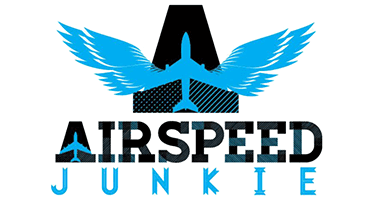By: Regina Mesick
Greetings from sunny St. Croix!
I’ve been asked to share with the Airspeed Junkie community what a typical day looks like down a runway less traveled. There are few pilots with a single engine sea rating, and even fewer with a multi-engine sea rating. That being so, I am faced with a lot of questions when I expose myself as a Captain on a Twin Otter with floats. I am currently an ATP airplane multi engine land and sea licensed pilot. I fly Twin Otters for Seaborne Airlines based in St. Croix, USVI. And I love my job. No matter how long the duty days are, no matter how many legs I will fly in a single day, I still go home and love what I do.
My alarm usually goes off somewhere around 5:30 am. Usually somewhat groggily, I begin my day. Upon arrival at the seaplane base, a routine preflight inspection is done. The preflight occurs with the plane on the trailer. Walking up and down the trailer itself can be daunting. Every well planned, methodical step is taken with the fear of falling permanently cemented in the back of my mind. I have yet to fall off the trailer itself, but I’ve had close calls. Take it from me, there is nothing that can wake you up better than the jolt of terror that runs through your body because your right foot started to slip out from under you walking down the trailer. It’s more effective than any cup of coffee. Most mornings, I evade any near death experiences associated with the trailer of terror.
Putting the plane in the water easily makes the top 5 on my list of favorite things about this job. It’s nothing special, but it’s unique and there’s always some first-timer passenger filming the whole process because it’s just that cool. When the trailer hits the clear, turquoise waters, I pull the engines into reverse, and we’re off.
Today, we have a full day of 12 legs, topping out at an 11.5 hour duty day. It’s our longest schedule, but it’s better than the 14 legs we used to have to do before the FAA changed the duty regulations. I’ve heard stories of 16 leg days they’ve done in the past; I’m not sure I’d like to know what my body feels like after 8 round trips.
Winds today are out of the East. Since there isn’t an ATIS at the seaplane base, we use other signs to tell wind direction. Things like flags, boats, and streaks on the water are all ways you can determine where the wind is coming from. With the area clear of hazards, I line the plane up into the wind for take-off. There are no designated runways for us, but we do have specific areas deemed safe and appropriate for our operations. The beauty of seaplane flying is the freedom to take-off and land almost wherever you want. We are never restrained by one specific runway heading.
Cruising at 1,500 ft. at 125 knots, we head North for St. Thomas. About 15 miles out, we contact the tower. The harbor is located under St. Thomas’s airspace, so we are required to coordinate with tower. Determining the wind direction, I can plan on “The Cut” approach. The Cut is an area of water between St. Thomas and Hassle Island, which then opens up into the Charlotte Amalie Harbor. Most days, the water in the cut is smooth before the winds pick up; these are ideal conditions to land on. “Landing assured” is relayed to tower, so they know we are safely on the water. I taxi to the dock and secure the plane. With that, one leg is down and eleven more to go. We can turn the plane in less than 10 minutes, and before you know it, we are on our way back to St. Croix.
Our flights are about 30 minutes long, dock to dock. This type of flying is rare in the Pt. 121 realm. Seaborne Airlines is the only Pt. 121 seaplane operator in the U.S. It truly is a unique type of flying, especially when every new type of aircraft is bigger and better than the last. Our planes hold 15 passengers and max out at 12,500 lbs. And for me, that is plenty. I know what I do for a living is pretty special, and I feel very fortunate to be able to experience this in my life before I hang up my boat shoes and move on to the next stage of my career.








